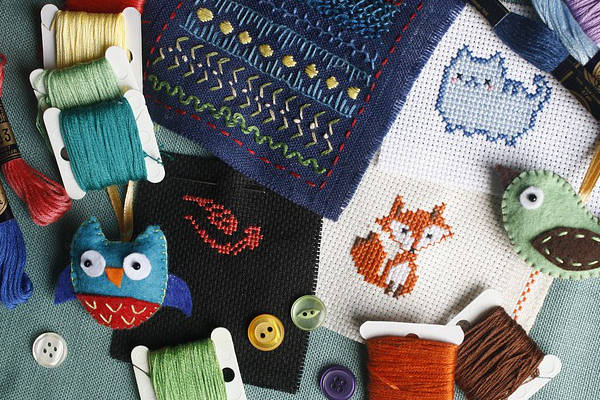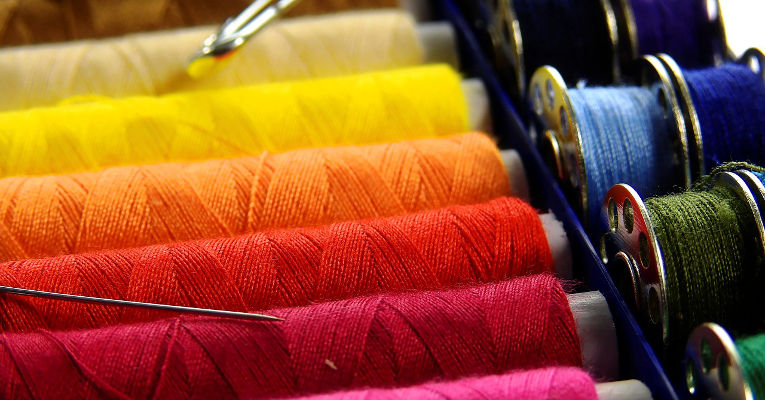Have you noticed the latest trend in the fashion world? Embroidered clothing is everywhere. As a result, it has become a popular hobby as well.
You’re probably wondering what all the fuss is about, right? Well, that’s what I’m here for: to give you all the ins and outs of why embroidery makes such a brilliant hobby.
21st Century Embroidery
If you looked at the title of this post and wondered why you would ever want to sit in the same chair (for hours), working with a needle and thread, then I’m here to tell you: this is the 21st Century.
The first reason why getting into embroidery as a hobby is so great, is that you can decide which medium you’re going to use – hand or machine.
While there are people who enjoy doing needlework the old way, I’m not one of them. I’m all for using technology to make my life simpler, and embroidery machines are an incredible invention.
Here’s how it works:
- You buy your supplies:
- Machine
- Needles
- Hoops
- Threads (different colours)
- Stabilizer
- Chosen fabric
- Embroidery design (you can download this online)
- Temporary adhesive spray
- Spray your stabilizer with the temporary adhesive and stick it onto your chosen fabric.
- Hoop your fabric and stabilizer. When hooping, you’ll need to ensure that the fabric is tight but not stretched.
- Attach the hoop to the embroidery machine (consult user manual).
- Attach needle and then thread it.
- Input your downloaded design into the machine (consult user manual).
- Your machine will do most of the work and give you any instructions, such as switching colours.
Now, you probably want to know what you could possibly use embroidery for. I mentioned that embroidered clothing has become a recent fashion trend; why not try your hand at it?
You can embroider any item of your choosing – dresses, skirts, shirts, tunics, shorts, jeans, leggings, bags, purses and even shoes. Embroidery works on everything from silk to leather.
Another plus? You could create birthday or holiday gifts for friends and family. A gift that you’ve made yourself – putting in the time, the thought and the effort – is usually the most endearing (and the cheapest).

Embroidery with a Twist
Whether or not you’ve decided to master clothing embroidery, I have something a little different for you to explore: wood embroideries.
No, I’m not kidding. Or crazy.
Wooden embroideries are becoming quite popular in the DIY scene. They’re easy, fun and look amazing. I don’t know why, but I love woodworks. There’s just something so incredibly beautiful about it that draws me in.
From small wooden jewellery, to wooden tables, you can embroider any wooden item that has a flat surface.
I’m sure you’ve seen a wooden disk necklace or two before. How would you like to create your own? Or perhaps a wooden cuff? And what about that eyesore of a side-table you’ve hidden in the closet?
Embroidering on wood is as easy as machine embroidery.
- Draw your pattern on the wood (this can be anything, including words).
- Drill holes along the pattern.
- Sand the wood on both sides to remove any splinters, as well as the design that you drew on the wood.
- If you’d like to paint (or spray paint) the wood, you can do it now.
- Finally, get stitching.
And that’s it. If you’re not used to using a drill, then don’t be scared to ask for help. I’m sure a friend or family member will be more than happy to help you with a fun project.
The Final Thread
Still not convinced about embroidery? That’s okay. It took a little while to convince me too.
Do you know how embroidery came to be? I could give you the history about how the oldest discovered embroidery is from 5th Century BC, China, and how it then spread across the globe, gaining popularity.
What I really want to tell you, is why embroidery was used for so many years. Today, we can stitch a few flowers or chic designs on our clothes, and it’ll look beautiful. But the only thing it’ll represent is ourselves.
In the old days, many cultures only allowed royalty or upper-class citizens to have embroidered clothing. Sultans and Emperors were particularly fond of clothing themselves, their wives and their children in embroidered robes, trousers and tunics (dresses for the ladies, of course).
Embroidery represented status and a high position in society.
Today, it doesn’t matter who you are, or what role you fill in society, you can wear anything you’d like at any time you’d like. So why not use embroidery as way of expressing yourself?
Celebrities are jumping at the chance to wear the latest embroidered item from Gucci or Marc Jacobs. What does this have to do with you? If you master embroidery as a hobby, you could use the finished items as a means of supplementing your current income.
The best businesses usually start out as hobbies. I’m not saying that you should commit yourself to this full-time; it’s a hobby, after all. I’m saying that you could generate a little extra income, with just a few stitches.
How many niche markets do you think there are, which sell embroidered wooden jewellery, furniture or boxes? Not many, I can tell you that much.
If you’ve decided to take my advice and pursue embroidery as a hobby, you’ll need to do small, practice stitches before moving on to an actual project. The best way to start is with small shapes and sequences.
Once you’ve mastered your stitches, the real fun can begin. Happy stitching.







